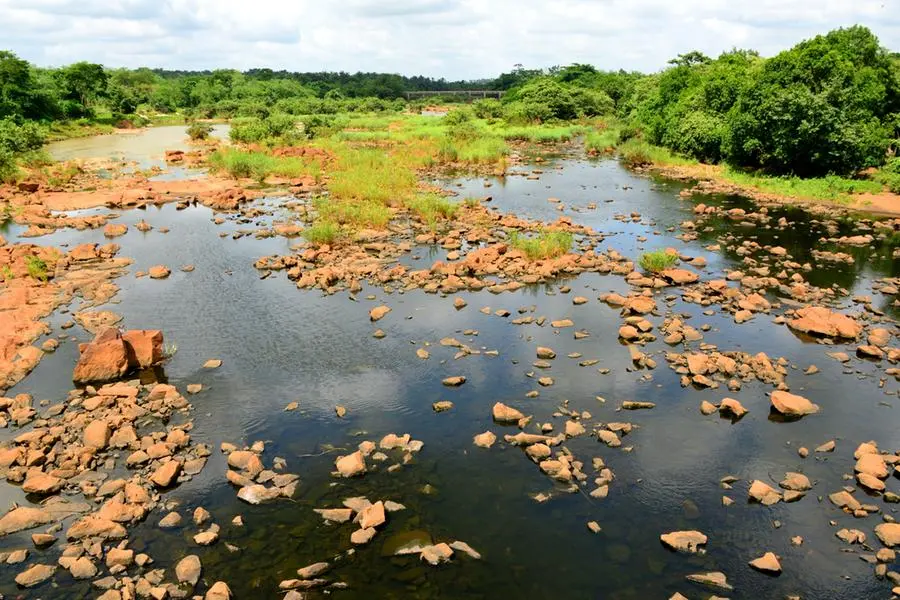PHOTO
Osun River, located in Southwest Nigeria, has recorded the highest figures globally for microplastics in a river sample, indicating extreme levels of plastic pollution in the river.
This is according to research led by Dr Gideon Idowu, a Senior Lecturer in the Department of Chemistry at the Federal University of Technology Akure (FUTA).
The research has unravelled the impact of widespread plastic pollution in Africa.
Related PostsNOA DG attributes bad societal behaviours to poor parenting Renewed communal clash: Osun govt imposes curfew on Ifon, IlobuIfon/Ilobu crisis: Five feared killed as Osun communities renew hostility
Dr Idowu was awarded the Jennifer Ward Oppenheimer (JWO) grant in late 2021 to lead the research project, which now involves over 20 scientists in nine African universities.
The JWO research project, which commenced about two years ago, has investigated microplastics and associated endocrine-disrupting contaminants in 19 marine and freshwater environments across the African continent.
In the maiden article from the research, published by Elsevier’s Journal of Hazardous Materials Advances, the authors shared specific results from their work on the Osun River.
The study investigated the incidence and abundance of microplastics in the water, sediments below the river water, and in fish species from the river. The authors found disturbing levels of micro(tiny) plastics in all the matrices investigated.
According to the article, “Abundance of microplastics in the river water samples, at a maximum of 22,079 particles/litre, represents the highest reported so far for river water globally.
Microplastics ranged from 407 to 1691.7 particles in the gastro-intestinal tract (GIT) of six fish species analysed, with silver catfish (Chrysichthys nigrodigitatus) having the highest concentration.
Levels in the fishes are higher than those reported for fishes in Asia and Europe, but similar to some other plastic pollution hotspots in Africa.
Speaking further on the results, Dr Idowu said “the Osun River is important for very many reasons – religious worship, domestic water supply, provision of fish resources, and so on.
“Our findings imply that people using the water may be exposed to high levels of microplastics, just as people using other polluted rivers in Nigeria. The fishes caught from the Osun River are also sold directly to the public, which implies another route of human exposure to microplastics.
“We simply need to rethink the way we use and manage plastics across Africa. The majority of the plastics responsible for these effects are use-and-throw-away (single-use) ones. We can do away with many of them.”
According to the published article, the uncontrolled and indiscriminate disposal of single-use plastics is a key factor in the level of microplastic pollution observed at Osun River.
The authors emphasise the need by Nigerian government to ban certain single-use plastics, as a step towards reducing plastic pollution of the Nigerian rivers, which shelter important aquatic resources and provide water for human use.
Dr Idowu noted that a policy to ban many single-use plastics is already being considered by the Federal Government.
He said: “That’s the way to go. Every nation that has made significant progress in reducing plastic pollution and its impacts on their surrounding environment has had to ban one form of plastic or the other.
“There are many of them that we can do away with. The Lagos State Government has recently taken that bold step; we need to do the same at the Federal level, in line with the Blue (Marine) Economy Agenda of the new government.
“Aside from this, we need to develop a vibrant plastics recycling industry to manage those plastics that we want to retain.”
Other ongoing works include the modelling of future levels of microplastics in African countries, as well as quantifying health risks that may be associated with human exposure to microplastics and related substances.
Copyright © 2022 Nigerian Tribune Provided by SyndiGate Media Inc. (Syndigate.info).





















